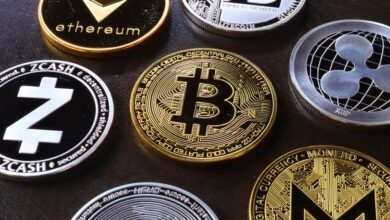Advancements in Gold Mining Technology: Shaping the Future of Extraction, Refinement, and Investment Strategies

As the global demand for gold continues to rise, driven by its status as a safe haven asset and a hedge against inflation, advances in gold mining technology are becoming increasingly crucial. In an era where sustainability is paramount, the gold mining industry is witnessing innovative techniques that enhance both the extraction and refining processes. These innovations not only improve efficiency but also address environmental concerns associated with traditional mining practices. In this article, we will explore the latest breakthroughs in gold technology, the impact of these advancements on sustainable gold mining, and how they influence gold market trends, prices, and investment strategies. From gold ETFs and gold futures to physical gold investments and gold recycling, we delve into how modern techniques are reshaping the landscape of gold production and trade, ensuring that this precious metal remains a viable option for investors and collectors alike. Join us as we uncover the future of gold mining and its implications for the gold market and beyond.
- 1. Innovations in Gold Mining Technology: Enhancing Extraction and Refinement Processes
- 2. The Role of Gold Technology in Sustainable Gold Mining: Balancing Profit and Environmental Responsibility
- 3. Gold Market Trends: How Advances in Extraction Impact Gold Prices and Investment Strategies
1. Innovations in Gold Mining Technology: Enhancing Extraction and Refinement Processes
The landscape of gold mining technology has evolved significantly, with recent innovations enhancing both extraction and refining processes. As the global demand for gold continues to rise, driven by factors such as economic instability and inflation, advancements in mining technology are crucial for maximizing gold production and ensuring sustainability in the industry.
One of the most significant innovations is the use of automated machinery and artificial intelligence (AI) in mining operations. These technologies not only increase efficiency but also reduce labor costs and improve safety for workers. By employing drones for aerial surveys and AI algorithms for predictive maintenance, companies can optimize their operations, leading to better extraction rates of gold reserves.
Additionally, advancements in hydrometallurgy, a method that uses aqueous solutions to extract gold, have emerged as a game changer in the refining process. This technique minimizes the environmental impact compared to traditional methods, aligning with the growing demand for sustainable gold mining practices. As consumers become more aware of ethical sourcing, gold recycling has also gained traction, allowing for the recovery of gold from electronic waste, jewelry, and other sources. This practice not only contributes to the gold supply chain but also helps stabilize gold prices in a fluctuating market.
Moreover, the integration of blockchain technology in the gold trade is transforming how gold is bought, sold, and tracked. This technology enhances transparency, making it easier to verify the authenticity of gold bullion and collectibles. With the rise of gold ETFs and gold futures, investors are increasingly looking for secure and reliable ways to invest in gold without necessarily holding physical gold. Blockchain ensures that transactions are secure and traceable, thereby reinforcing trust in the gold investment market.
As central banks continue to accumulate gold as a safe haven asset, understanding gold market trends becomes essential for investors. The interplay between gold and cryptocurrency is also noteworthy; as digital currencies gain popularity, the traditional role of gold as a hedge against inflation and economic uncertainty remains relevant. Gold coins, gold bars, and luxury gold jewelry are not just symbols of wealth but also serve as strategic investments in an increasingly volatile economic environment.
In conclusion, innovations in gold mining technology are not only enhancing extraction and refining processes but also shaping the future of gold investment strategies. By embracing sustainable practices and leveraging advanced technologies, the gold industry can meet the rising global demand while ensuring ethical standards and environmental responsibility.
2. The Role of Gold Technology in Sustainable Gold Mining: Balancing Profit and Environmental Responsibility
The intersection of gold technology and sustainable gold mining is increasingly critical as the industry seeks to balance profit with environmental responsibility. As global gold demand continues to rise, driven by factors such as gold investment and the allure of gold jewelry, the pressure on natural resources intensifies. This necessitates the adoption of innovative gold mining technologies that not only enhance efficiency but also minimize environmental impact.
Advanced gold refining techniques, including the use of non-toxic solvents and closed-loop systems, are emerging as viable alternatives to traditional methods that often involve harmful chemicals. These advancements not only improve the purity of gold production but also address concerns related to gold smuggling and unethical mining practices. By leveraging gold technology, mining companies can ensure that their operations align with sustainable practices, thereby enhancing their reputation in the gold trade.
Furthermore, the integration of digital technologies such as blockchain in gold tracking and trading can provide transparency in the gold market, which is crucial for curbing illegal activities and ensuring that gold coins and gold bullion are sourced responsibly. This transparency helps maintain the integrity of the gold market, particularly as central banks increase their gold reserves as a hedge against inflation and economic instability.
Investors are becoming more conscious of the environmental footprint of their gold investments. This awareness is reflected in the growing popularity of gold ETFs and gold futures that focus on sustainable practices. By investing in companies that prioritize sustainable gold mining, investors can contribute to a responsible gold economy while also benefiting from the potential for appreciation in gold prices.
As the gold market evolves, the emphasis on sustainability will likely become a significant factor influencing gold market analysis. Companies that adopt responsible mining practices not only help protect the environment but also position themselves as leaders in meeting the global gold demand. This dual focus on profit and environmental stewardship is essential for the future of luxury gold and the broader gold collectibles market, as consumers increasingly seek products that reflect their values.
In summary, the role of gold technology in sustainable gold mining is pivotal in creating a balance between profitability and environmental responsibility. By embracing innovative techniques and promoting transparency, the industry can mitigate its ecological impact while still catering to the insatiable global appetite for gold.
3. Gold Market Trends: How Advances in Extraction Impact Gold Prices and Investment Strategies
The gold market is continually evolving, shaped significantly by advancements in extraction technology and the dynamics of global demand. As new methods emerge, they not only enhance the efficiency of gold mining but also influence gold prices and investment strategies.
Recent innovations in gold mining technology, such as improved extraction techniques and sustainable practices, have led to a noticeable increase in gold production. This uptick can impact gold prices, as a higher supply often leads to price stabilization or decline. However, when production increases are coupled with rising global demand—driven by factors such as economic uncertainty, inflation, and the desire for safe haven assets—gold prices may remain robust or even appreciate. For instance, as central banks amass gold reserves in response to inflationary pressures, this can create upward momentum in gold prices, reinforcing its status as a protective asset against market volatility.
Investment strategies in the gold market are adapting to these trends. Increasingly, investors are turning to gold ETFs and futures as efficient vehicles for exposure to gold without the need for physical storage. Additionally, gold coins and gold bullion remain popular choices, particularly among collectors and those looking for tangible investments. In the luxury segment, gold jewelry and collectibles are also seeing a rise in interest, as consumers seek both beauty and value.
Moreover, the emphasis on sustainable gold mining has emerged as a critical theme in the industry. As consumers and investors prioritize ethical sourcing, the market is witnessing a shift towards gold recycling and responsible production practices. This not only aligns with growing environmental concerns but also influences investment decisions, as more investors seek to support sustainable practices in their portfolios.
Finally, the interplay between gold and cryptocurrency has introduced new dimensions to gold market analysis. While cryptocurrencies are often viewed as alternatives to traditional safe haven assets, many investors still regard physical gold as a reliable hedge against economic instability. As such, the relationship between gold and cryptocurrency could influence future gold market trends, potentially reshaping investment strategies.
In summary, the advancements in gold extraction and refining technologies are intricately linked to gold market trends, impacting gold prices and shaping investment strategies. As the landscape evolves, investors must remain vigilant, adapting to changes in global gold demand, technological innovations, and market dynamics to make informed decisions in their gold investment portfolios.
In conclusion, the landscape of gold mining technology is continually evolving, significantly impacting extraction and refining processes. Innovations in gold technology not only enhance efficiency but also prioritize sustainable gold mining practices, helping to balance profitability with environmental responsibility. As we observe shifting gold market trends, the implications of these advancements on gold prices and investment strategies become increasingly evident. Investors looking to capitalize on gold as a safe haven asset must stay informed about the relationship between gold production and global gold demand, especially in the context of gold and inflation dynamics.
Moreover, the emergence of gold ETFs and gold futures offers new avenues for investment, allowing both seasoned investors and newcomers to diversify their portfolios with physical gold, gold bullion, and luxury gold collectibles. As central banks continue to accumulate gold reserves, the influence of gold on the global economy remains undeniable. While challenges such as gold smuggling and unethical practices persist, the commitment to sustainable gold mining and the recycling of gold jewelry and coins stands as a testament to the industry's dedication towards responsible practices.
Ultimately, understanding gold market analysis and the interplay of technology, sustainability, and investment strategies will empower stakeholders to navigate the complexities of the gold trade effectively. Whether you're considering gold coins investing or exploring the potential of gold and cryptocurrency, the future of gold mining presents a wealth of opportunities for growth and innovation in this timeless asset.





